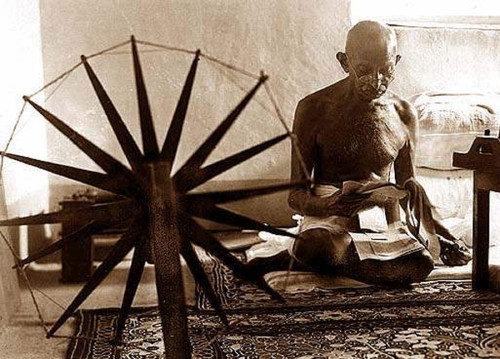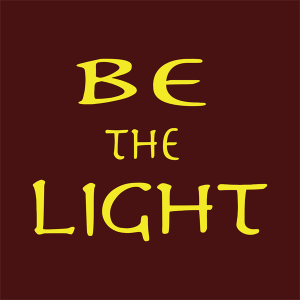 Countering Violence
Countering Violence
The human race has always been violent, when we turn on the news it seems like every corner of the world is saturated with people mistreating others with disconnecting behavior. Whether the constant, unending turmoil that continues to envelop the Middle East, or our own struggles with those acting violently here at home, it can be depressing and confusing. There seem to be few answers to lessen such rampant violence, especially as one individual. Yet so many of us desire nothing more than to live on a safe and peaceful planet with each other, and to pass this legacy on to our children. With so much at stake it demands the question, ‘what can I, as one person, do today to create a more peaceful world?’
 The answer lies in an ancient but timeless idea, the practice of ahimsa. Ahimsa is an idea whose time has come, a beautiful concept that extends beyond non-violence to encompass a respect for life that implies not just not killing, but to the point of non-injury, not hurting others mentally or verbally; avoiding all violent means through disconnecting behavior. It extends beyond how humans treat each other to how we treat all living beings and the earth itself.
The answer lies in an ancient but timeless idea, the practice of ahimsa. Ahimsa is an idea whose time has come, a beautiful concept that extends beyond non-violence to encompass a respect for life that implies not just not killing, but to the point of non-injury, not hurting others mentally or verbally; avoiding all violent means through disconnecting behavior. It extends beyond how humans treat each other to how we treat all living beings and the earth itself.
Ahimsa is a practice of non-violence that takes a great deal of mindfulness and willingness to see our interconnection, with the deep recognition that ‘If I help you, I help me and if I hurt you, I hurt me.’
It is a difficult to live a life practicing ahimsa, to be sure. Yet it is such an important, even critical idea to always keep in mind because it calls on us to reach for the highest ideals of what we can do to make our world a more beautiful.
Roots Of Ahimsa
The idea of ahimsa finds its origin in ancient Hindu vedic texts that describe the concept as being the highest attainable virtue, the way in which to live a moral life. It is a sanskrit term as much as 3000 years old that means, quite literally, the avoidance of himsa (violence). On a practical level, it means that the idea of violence toward other living creatures produces negative energy and invites negative karma into your life. Ahimsa in it’s simplest form is the practice of purging negative thoughts and replacing them with positive ones.
Below is an informative breakdown of the sanskrit.
hiṃsā – To strike
a-hiṃsā – Cause no injury or harm. To show compassion
In earlier times, ahimsa was practiced among others who also practiced ahimsa. Ahimsa was not extended to criminals and in the context of wartime.
Today, ahimsa is practiced on a deeper level and applied to all areas of one’s life. As our world cultures have evolved, so has our practice of ahimsa. We no longer have the absolute need for violence of any kind against animals for our survival, nor do we need to act violently in politics to communicate our needs and visions.
Ahimsa has evolved into the practice of nonviolence on a heart level. The idea is that physical violence is only a symptom of a deeply troubled and violent heart.
Ahimsa has always been intertwined with yoga, another ancient Hindu practice. Yoga practitioners are encouraged to engage in the spirit of ahimsa in their yoga practice, and then invited to take this mindfulness into the rest of daily life . Namaste, bowing to the divine in one another, is another Hindu idea that is congruent with the practices of ahimsa and yoga. Together, these three ideas form the basis of a belief system whose focus of greater clarity, meaning, and happiness can be achieved with greater presence and connection.
A Modern-Day Example
 One of the most influential people in modern times who modeled ahimsa as it is now understood is Mahatma Gandhi, who focused his life on the idea that mental violence and all negative thoughts and words were included in the practice of ahimsa.
One of the most influential people in modern times who modeled ahimsa as it is now understood is Mahatma Gandhi, who focused his life on the idea that mental violence and all negative thoughts and words were included in the practice of ahimsa.
Gandhi’s message of a deeper responsibility to one’s own thoughts and words is really what embodies modern day ahimsa. Out of these ideas he was able to catalyze on a mass scale the use of non-violent direct action and create an effective political movement focused on common humanity by appealing to the best of what the human race is capable of when we behave with compassion and empathy.
Gandhi had this to say about ahimsa, “Ahimsa means not to injure any creature by thought, word or deed. True ahimsa should mean a complete freedom from ill- will and anger and hate and an overflowing love for all. Ahimsa is the attribute of the soul and therefore to be practiced by everybody in all the affairs of life.”
Be The Light
 Ahimsa is not just an idea but a lifestyle choice. It is a constant, conscious choice in how to engage with the world around us.
Ahimsa is not just an idea but a lifestyle choice. It is a constant, conscious choice in how to engage with the world around us.
It is not for the weak of heart or lazy of mind, it takes immense strength and unwavering courage to practice ahimsa on a heart level, but the rewards are great.
Ahimsa is born in empathy, compassion, and mutual respect, and is therefore one of the few ideas that can actually help the human race transcend the cycles of disconnection that are still all too common.
You only control your own behavior, living and acting from a mindset of Ahimsa not only positively affects your own well-being, but contributes to the well-being of all of your relationships.
‘Let there be peace on Earth and let it begin with me.’
If you believe that ahimsa is more important than ever in today’s culture show it in a lasting way. Click here to purchase our ‘Ahimsa’ sticker today.
Read more about ahimsa:
